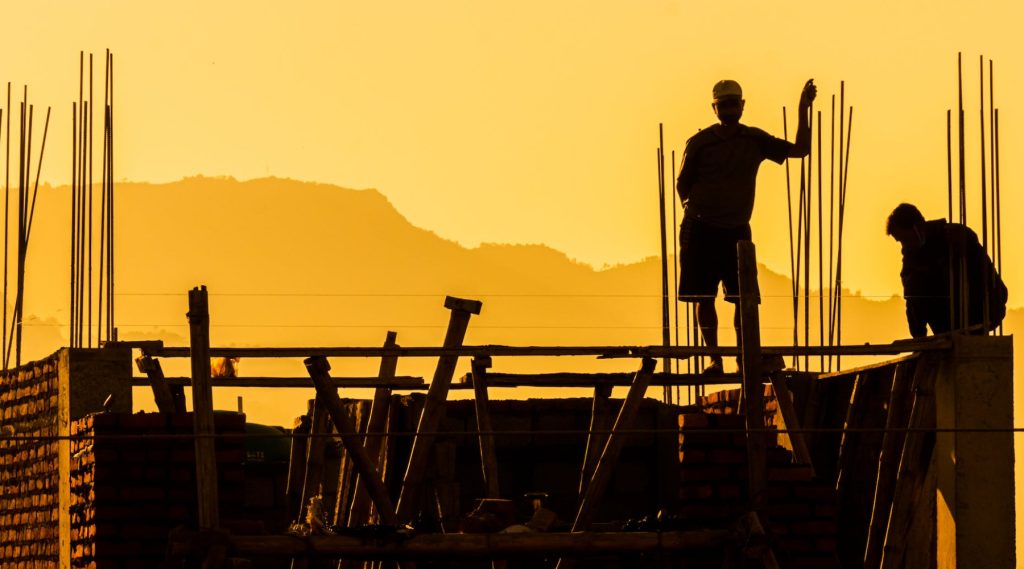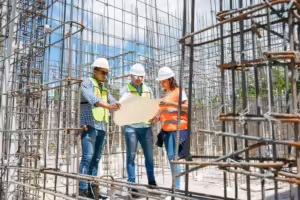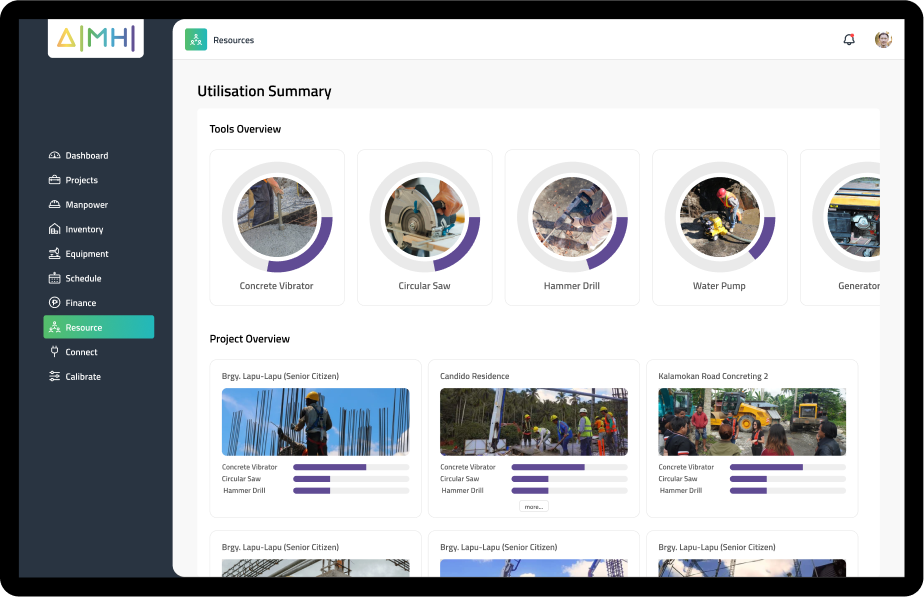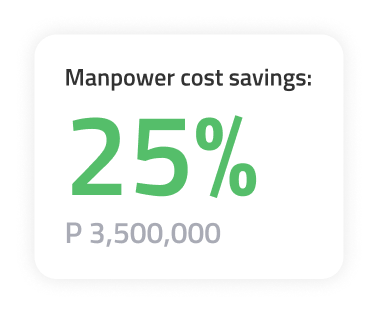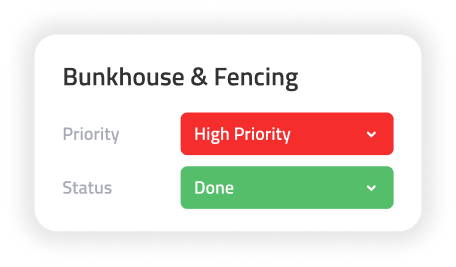
THE CONSTRUCTION INDUSTRY has not stopped living through an exciting phase, growing nonstop past the pandemic while facing challenges simultaneously. Identifying potential challenges ahead of the project can protect profits and cut down costs with the help of modern solutions and technological advancements. Such is possible with profit management software which seamlessly paves the way for improving business by collecting and storing data systematically to streamline operations, minimize risk, and reduce cost.
Some challenges in construction are new, while others are as old as the construction industry itself –shortage of skilled laborers, project delays, cost overruns, and less access to building products and materials, to name a few. In 2020, almost 83% of the contractors experienced project delays, while at least 85% expected slow project results at the beginning of 2021. While the construction industry continues to recover as pandemic-related concerns are at ease, rising fuel prices that affect construction cost becomes a challenge. In the Philippines, construction companies reported mixed results in the first quarter of 2022 but remained positive about their continued recovery.
There are many ways to address construction issues. Contractors, builders use construction management software, and subcontractors to improve work allocation and view the entire project development. It manages construction workflow, assigns projects, and contracts, tracks project costs, and lessens work delays.
5 Construction Challenges and How Profit Management Software can Help
Here are five reasons a Profit Management Software can help address construction challenges:
1. You need better manpower planning.
Considering Covid-19 related restrictions, construction companies have a long history of dealing with a labor shortage. In the Philippines, the Department of Labor and Employment (DOLE) reported that the construction sector’s share of total employment increased to 9.5% in 20 9. There is also a shortage of skilled construction workers, and the construction industry is not attracting enough workers to meet its growing demand.
A survey from the Associated General Contractors (AGC) found that 75% of construction firms expect to add headcount in 2018 and that 78% of these firms are having trouble finding qualified workers. About 21% of employees in the construction industry are aged 55 or older, compared to the 9% that are 24 years old or younger And with an ongoing stereotype that the construction industry is not an ideal place for a woman, with 99% of workers on site estimated to be men (CIF, 2018), the problem lies in the current perception of the industry.
Along with major construction firms asking for DOLE’s assistance in sourcing thousands of workers, the question remains if the Philippines can maintain a suitable supply of skilled and unskilled workers to carry on the previous administrations’ centerpiece program, The Build Build Build (BBB) in achieving the “Golden age of infrastructure.”
There are several workforce issues present in the construction industry besides labor scarcity.
In 2015, a study showed that around 30% of all recorded occupational injuries experienced by construction workers are related to certain musculoskeletal disorders caused by overexertion and improper handling of materials in the workplace.
These are just a few of the manpower challenges you will encounter in the construction industry. With the help of accurate construction project management software, you can preempt the need for additional manpower or schedule construction workings accordingly without paying extra for a redundant task.
2. Your construction project’s success relies on strong team collaboration.
In a construction project, falling behind or running over budget can be risky if workers cannot establish clear targets. Without these goals, making people accountable for their roles in the project can be difficult. Accountability helps keep the whole project together when every task assignment is clarified and seamlessly assigned to all team players. Each one needs a clear task, breaking down project-wide goals into smaller daily targets for individuals to accomplish. f something isn’t done in one day, it’s added to the next day’s work. According to a McKinsey report, well-connected teams see a productivity increase of 20-25%.
Unsurprisingly, the highest percentage of problems within a construction project is the lack of faster communication within the team and other departments. Without clear and effective communication, important tasks will be overlooked while the team is unaware of an issue until it’s too late to rectify it. Per CMSWire, 97% of these employees believe communication impacts their daily task efficacy. This is another massive problem that can easily be solved in multiple ways by modern-day technology like construction software.
3. Your workflows and materials cost control need to be digitized.
Materials management is essential in the construction industry. Poor materials management results in an avoidable cost in completing a project. Materials represent a major expense in construction, so minimizing procurement or purchase costs is an important opportunity to avoid cost overrun. Decisions about material procurement are required during the initial planning and scheduling stages. Accordingly, ensuring a timely material flow is an important concern of project managers.
Observing the trends in construction technology presents a very mixed and confusing picture. The quality of materials plays a crucial role in the outcome of projects; it makes sense why construction firms use project management software. In these systems, the production schedule, inventory, records, and product components are merged to determine what items must be ordered, when they should be ordered, and how much each item should be ordered during the project.
4. You want better management of both motorized assets and non-motorized equipment.
With heavy machinery and equipment for construction, it is vital to consider their effects on the environment, keeping the importance of sustainability in the picture. Mindfulness toward nature by observing “green” measures, such as reducing emissions from the operation of heavy equipment, has become a priority in the evolving industry with laws surrounding environmental preservation. To stay in business and keep up with competitors, consistently meeting these regulations is a must.
In 2021, Research and Markets said that the Philippine construction industry expects to record growth of 21.9%, with an output surpassing pre-pandemic levels in 2023. In 2022, the industry is projected to register a growth of 14.9% and then expand by an annual average rate of 7.8% over the remainder of the forecast period (2023-2025). The overall increase in construction demand equals demand for heavy equipment and operators.
Advanced technology poses a challenge to the heavy equipment industry. With construction project management software, project managers can easily identify the type of machinery the construction needs and the number of days they will need it. Manufacturers must adapt and offer up-to-date and tech-savvy equipment to meet project demands.
5. You want your budgets to be accurate.
Controlling and budgeting costs is essential in any operation. The same can be said for the construction industry, where cash flow often poses a potential issue for the construction supply chain, and the possibility of cost overruns is a huge risk to be avoided for the project and the entire company.
Being in this industry means juggling numerous project deals alongside managing the possible risk of financial complications while keeping revenue as the top priority. From a survey of 195 construction companies conducted by TSheets and zlien, 19% of respondents have a constant cash flow problem, while another 17% say they experience cash flow problems once a month. On the other hand, only 13% of respondents reported never experiencing cash flow problems.
Securing a proper cash management system is essential for the business to ensure revenue and profitability. With profit management software specifically designed for the construction industry, one can optimize costs, regulate the flow of finances within a project, and ensure profitability and a secure cash flow for the business.
OTHER CHALLENGES
Unavoidable Circumstances
When venturing into the construction industry, one must hope for the best yet prepare for the worst – weather with natural calamities, extreme weather conditions, or unfortunate events that bring heavy impacts from losses such as theft, fire, and even a global pandemic that we recently experienced.
Negative impacts of the Covid-19 pandemic on the construction industry include a contraction of 9.8% as lockdowns take effect in response to authorities’ measures to prevent the further spread of the coronavirus. Bouncing back to recovery, data from the Philippine Statistics Authority (PSA) shows that 4.2 million Filipinos are employed in construction, up from 3.7 million in 2020. Analytics firm Fitch Solutions shared a forecast showing growth in the industry by 9.5% in 2021, which was the expected recovery timeline for the Philippines.
Anticipating unfavorable circumstances and thinking of efficient solutions before they occur is one way of getting ahead and lessening, if not entirely avoiding, the impact of such challenges. Using real-time and historical data driven by AI technology, getting the right construction software for your business helps you learn project inefficiencies with useful information to aid you in planning.
Adapting Technologies
Together with the fast-paced development of technology, innovative advancements in the construction industry are rapidly changing along with the competition in the industry. Business owners must update themselves with the latest know-how, techniques, and tools in construction to keep up with competitors or risk falling behind with obsolete ways of the trade.
While the Philippines’ construction sector is traditional and behind in digitalization, redesigning tasks and embracing technology should be implemented to improve the methods and techniques used to ensure the safety of the construction workers.
A product of advanced technology, AIMHI seamlessly provides you with the right tools and information to keep you up to date with construction best practices, insights, and data to help your business maintain its spot as an outstanding performer in the industry.
Conclusion
The construction industry is quite old and has been through many challenges. Some of these problems are extremely old, while others have become more prominent in recent years despite not being a problem. In this article, we tried going over the most significant construction issues on the market and some ways to avoid or eliminate them.
Labor scarcity, project delays, cost overruns, and less access to building products and materials. Profit management software is essential in improving the management and operation of construction projects. The automation and accessibility it gives are especially helpful for more prominent construction companies handling multiple projects and supervising many workers. Aside from ease, using profit management software like AIMHI enables these companies to save money, energy, resources, and time without being deliberate.
Once you establish your construction business, have a contingency plan for when challenges arise. Use cutting-edge technology to be ahead in the game in the form of AIMHI, a construction management software that helps optimize costs, reduce risks, and increase profits.
If you own a construction company, it is best to spend time understanding innovative technology that fits the growing economy and see how your business can succeed over the years.
Book a demo with us to learn more about how AIMHI can increase your profit by as much as 5 to 10 percent.

